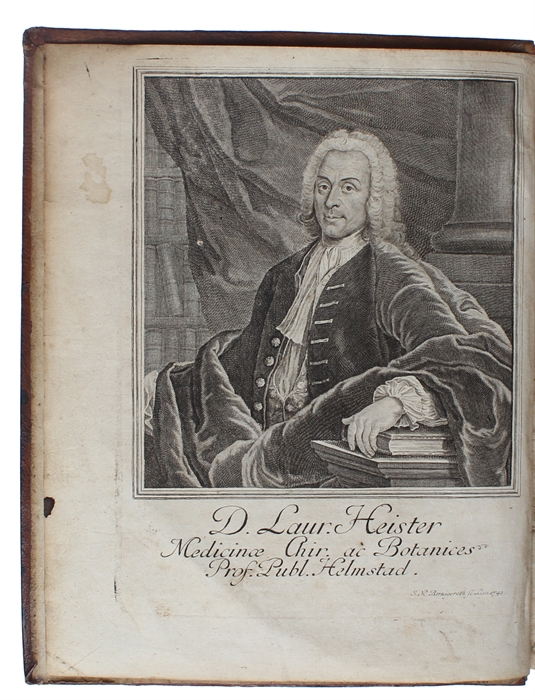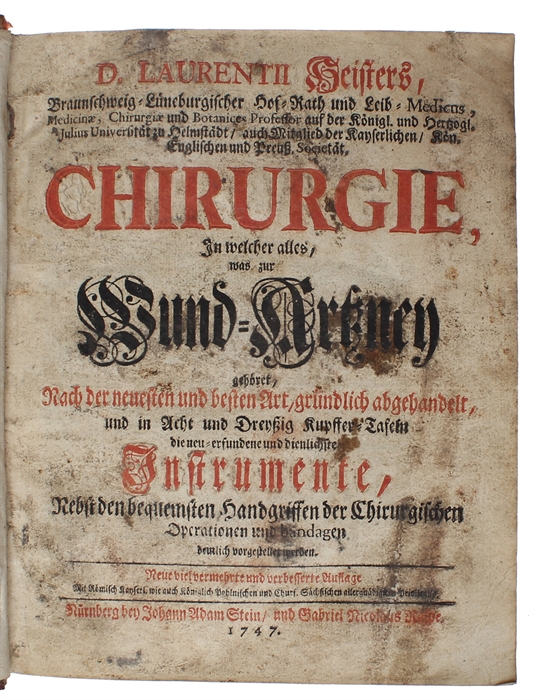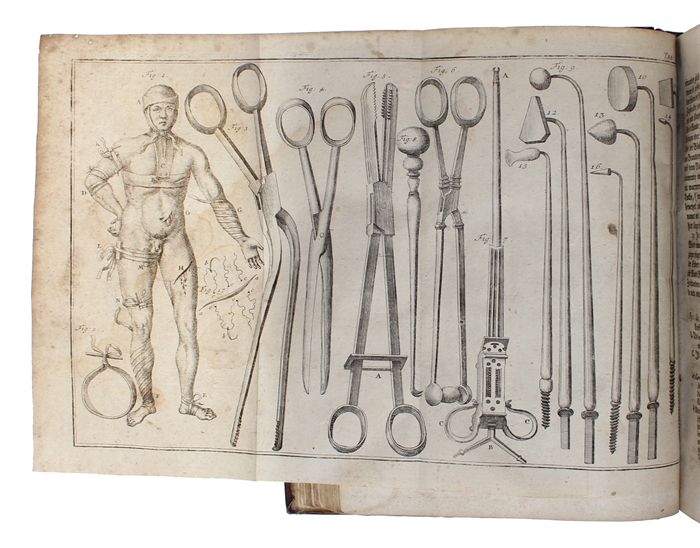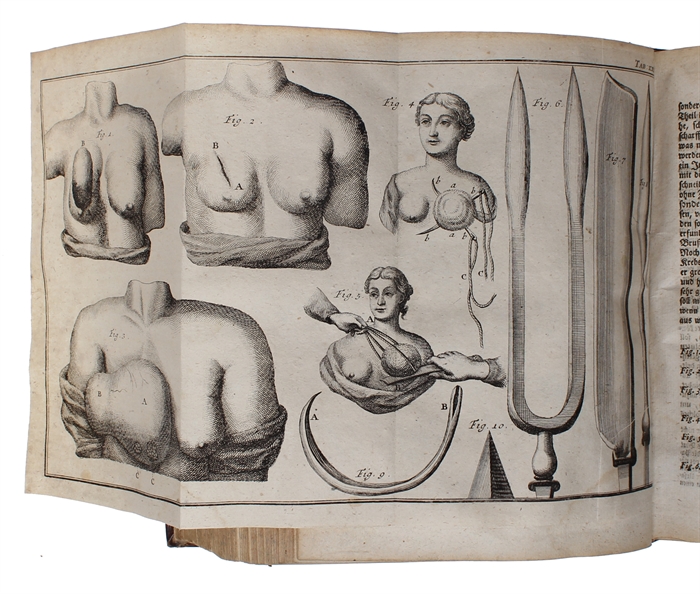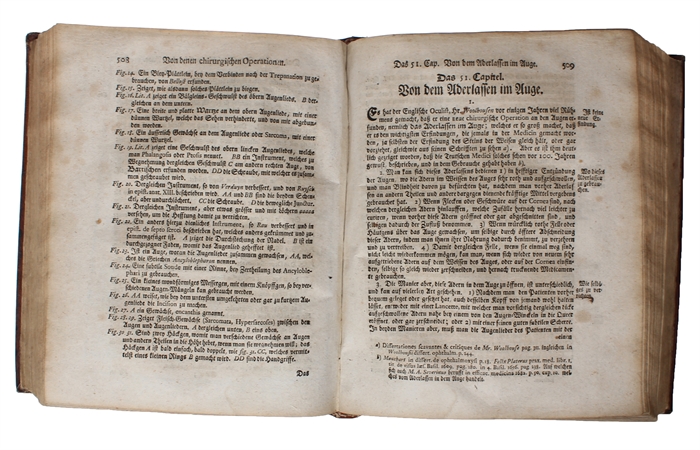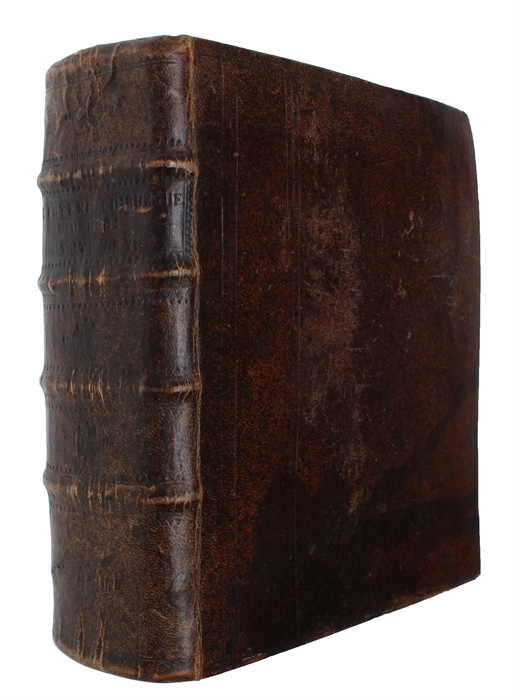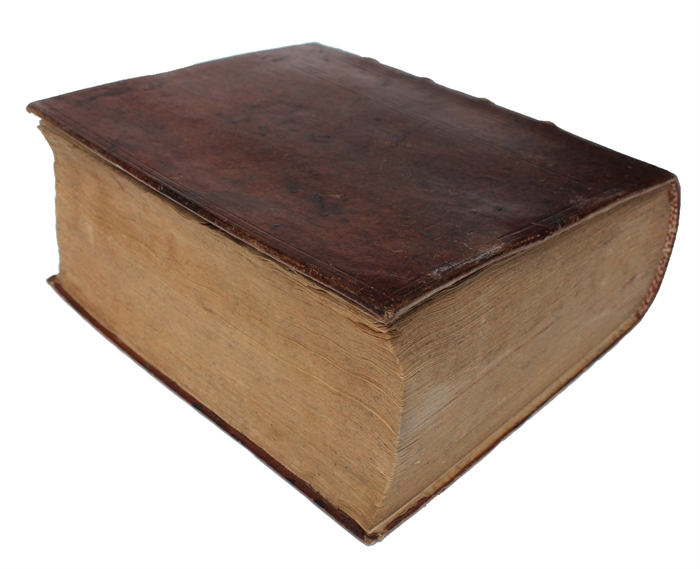THE FOUNDING WORK ON SCIENTIFIC SURGERY IN GERMANY
HEISTER, LAURENZ.
Chirurgie, in welcher alles, was zur Wund-Arzney gehöret, Nach der neuesten und besten Art, gründlich abgehandelt, und in Acht und Dreyßig Kupffer-Tafeln die neu-erfundene und dienlichste Instrumente, Nebst den bequemsten Handgriffen der Chirurgischen Operationen und bandagen deutlich vorgestellet werden. Neue viel vermehrte und verbesserte Auflage.
Nürnberg, Johann Adam Stein und Gabriel Nicolaus Raspe, 1747.
4to (213 x 165 mm). In contemporary full calf with four raised bands and blind-stamped title and ornamentation to spine. Light wear to extremities. Title-page soiled and with professional repairs. Light occassional marginal brownspotting. A good copy. (14), 1078, (24) pp. + frontiespiece and 37 folded plates (numbered up to 38, wanting no. 36).
Later, much enlarged edition, of Heister’s landmark work which is considered to be inaugurating scientific surgery in Germany. “It was the standard work on surgery in the eighteenth century, becoming one of the most translated, most used, and most respected text ever written, and was still used as a standard text at Vienna as late as 1838”. (Heirs of Hippocrates). In July 1709 Heister rejoined the Dutch army, this time as a field surgeon during the siege of Tournai. Later he tended those wounded in the battles of Oudenarde and Malplaquet. On 11 November 1711 he was appointed professor of anatomy and surgery at the University of Altdorf, near Nuremberg. In 1720 Heister was appointed professor of anatomy and surgery at Helmstedt. Heister made many minor anatomical discoveries and corrected some faulty observations of his predecessors. While a field surgeon, he discovered the true cause of cataracts: an opacity of the crystalline lens, instead of a film over the cornea, as had been believed. His main significance, though, is as a teacher and author. In Altdorf and in Helmstedt he trained a large number of surgeons and physicians. “His books on anatomy, surgery, and medicine dominated the field for several generations, serving to educate thousands of surgeons and physicians throughout western Europe. Heister’s main work, the Chirurgie, which was originally written in German, was translated into seven languages, including Latin and Japanese. Although not the first European book on surgery to be translated into Japanese, it was certainly the most successful, introducing Western methods to many Japanese surgeons.” (Encyclopedia Britannica) Wellcome III, p. 237.
“Heister was the founder of scientific surgery in Germany. His book contains many interesting illustrations and includes an account of tourniquets used in his time; Heister introduced a spinal brace. This was the most popular surgical text of the 18th century; it underwent numerous editions and translations.” (Garrison & Morton).
Heister was the son of a lumber merchant who later became an innkeeper and wine merchant. He was educated at the Frankfurt Gymnasium and received additional private lessons in French and Italian. In 1702–1703 he studied at the University of Giessen and in 1703–1706 at the University of Wetzlar. When he left Wetzlar, Heister had completed the study of all subjects needed for the practice of medicine. Thereafter he went to Amsterdam, where he attended the botanical lectures of Caspar Commelin and the anatomical demonstrations of Frederik Ruysch. Amsterdam was at the time the world center for the study of exotic plants and one of the few places where anatomy could be studied by practical dissection.
Garrison & Morton 5576
Order-nr.: 60186

